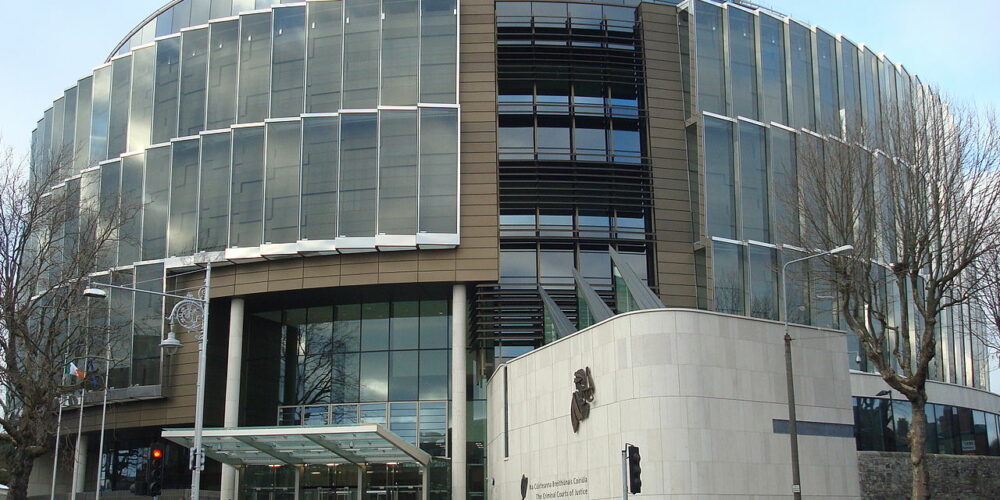Governments are not formed on the basis of opinion polls. Nevertheless it would be unwise to discard their findings, especially when a consistent trend is emerging.
With this in mind, it is difficult to deny that Sinn Féin is gaining ground and establishing a strong, some might argue unassailable, position. Should this trend continue, there is every likelihood that the party will have a decisive influence over the formation of the next Government in Dublin. Such a significant change in the political landscape requires serious analysis.
Reflect for a moment on what has happened in the party-political arena over the last decade. From the formation of the 26-County state, every Government has been led by one of two parties. Since 2016, however, these two parties have been growing ever closer, first with a “confidence and supply” agreement and then together in coalition since 2020.
For decades the dividing line between Fianna Fáil and Fine Gael was the Civil War. It now appears that this is no longer a cause for enmity—not between the parliamentary parties at any rate.
Significantly, the ending of this decades-old animosity has been facilitated by a shared hostility towards Sinn Féin. While this mutually accepted consensus has the immediate rationale of a strategy aimed at maintaining parliamentary supremacy, more fundamentally it has involved one party in particular relinquishing certain long-held positions.
In its struggle with Sinn Féin, Fianna Fáil has abandoned any pretence of being a republican party and is now simply Redmondite. Moreover, after several years of collaborating closely with its one-time Blueshirt rival there is now no divergence between the parties on social or economic issues.
In short, there is no compelling reason why most people should vote for Micheál Martin rather than for Leo Varadkar. The evidence so far suggests that this is having a disproportionately detrimental effect on Fianna Fáil. While the wealthier, conservative section of society continues to support Fine Gael, the less well off are deserting Fianna Fáil.
There is, of course, no guarantee about how this will play out in the next election, or that it will necessarily result in a Sinn Féin government. Nevertheless it is important to explore that possibility, and especially in the light of how the party has been positioning itself of late.
Take for a start the comprehensive report last month in the Business Post describing the level of Sinn Féin’s extensive engagements with big business and finance.¹ This continuing round of consultations even included meeting a vulture-fund lobbyist. When asked to comment, party spokespersons claimed that these were merely listening sessions, designed to exchange points of view, with no commitments entered into.
A sceptic might well ask, though, how many meetings it takes to tell speculators and landlords that they have no place in a country that has a housing crisis or indeed no proper policy on public housing.
Revealing also is the party’s attitude towards health. Its spokesperson on health, David Cullinane, states that if in government he would allow consultants to carry out private work—in other words, a continuation of the two-tier health service that is at the root of so many problems and simultaneously reinforces inequality throughout society.
This is against a background of support for the market-driven European Union, now planning to expand its military capacity. Worryingly, too, there are strong indications that in office the party would not move to prevent the US military using Shannon Airport as a stopover.
Perhaps the most telling development in Sinn Féin’s recent journey occurred at the recent ard-fheis. Delegates voted to abandon the party’s long-standing opposition to the use of the non-jury Special Criminal Court. In reality, the dramatic U-turn was a cosmetic exercise, aimed at gaining favour among right-of-centre electors.
The decision to end decades of opposition to this draconian legislation had ominous echoes of another party in a neighbouring jurisdiction. It was disturbingly similar to Tony Blair’s “clause 4” moment in 1995, which signalled a move to the right by the British Labour Party.
There is one factor, however, that complicates this assessment. Sinn Féin remains committed to its position on Irish unity. While its demand falls far short of the requirement for a workers’ republic, it does nevertheless keep a crucial issue centre stage, an issue whose realisation will not be easily contained within centrist social-democratic parameters. A quotation from a former general secretary of the CPI, Seán Murray, in the November issue of Socialist Voice spells this out succinctly, in which he said that the national question “is the most powerful weapon in the hands of the working class in Ireland.”²
Objectively speaking, therefore, we have to review what is the overall Sinn Féin impact. While not launching a socialist initiative, it has nevertheless helped disrupt the political stasis afflicting the Republic for years. The old cosy 2½-party system has broken down. It is now possible to think outside the Fianna Fáil / Fine Gael box, and no-one knows where that will lead.
And, as mentioned above, its highlighting of the national question unsettles the prevailing equilibrium while also raising questions about the make-up of a new Ireland. In short, while not breaking the mould the party has helped open the door to change.
So we are presented with a conundrum—or are we? Clearly no serious socialist could give uncritical or unqualified support to Sinn Féin. Mary Lou McDonald and her colleagues are eager to enter high office and, as outsiders, have found themselves benefiting from conditions that demand change. Inadequate housing, health, education and training, workers’ rights and safety and care for the elderly are all areas crying out for fundamental improvement.
The problems outlined here cannot be overcome while adhering to the constraints imposed by a market-led economy, even with a government adopting social-democratic or Keynesian policies. Sinn Féin’s economic strategy will fail, because the party organisation is unwilling to contemplate the steps necessary to implement meaningful change that is possible only with a thoroughgoing socialist programme.
The challenge for the left is to recognise the positive yet inherently limited nature of the Sinn Féin programme and to continue pressing forward when it eventually and inevitably stalls. In its place it is imperative to convey a clear socialist message, unambiguously and convincingly, to Ireland’s working class.
To do so it is necessary to reinforce the network capable of delivering the message to every part of the country and to equip activists with the arguments and the medium with which to achieve this objective.
- Michael Brennan, “How Ireland Inc is changing tack as Sinn Féin’s path to power opens up,” Business Post, 21 November 2021 (https://bit.ly/3DTeb1N).
- Graham Harrington, “The CPI as a product of Irish conditions,” Socialist Voice, November 2021.






